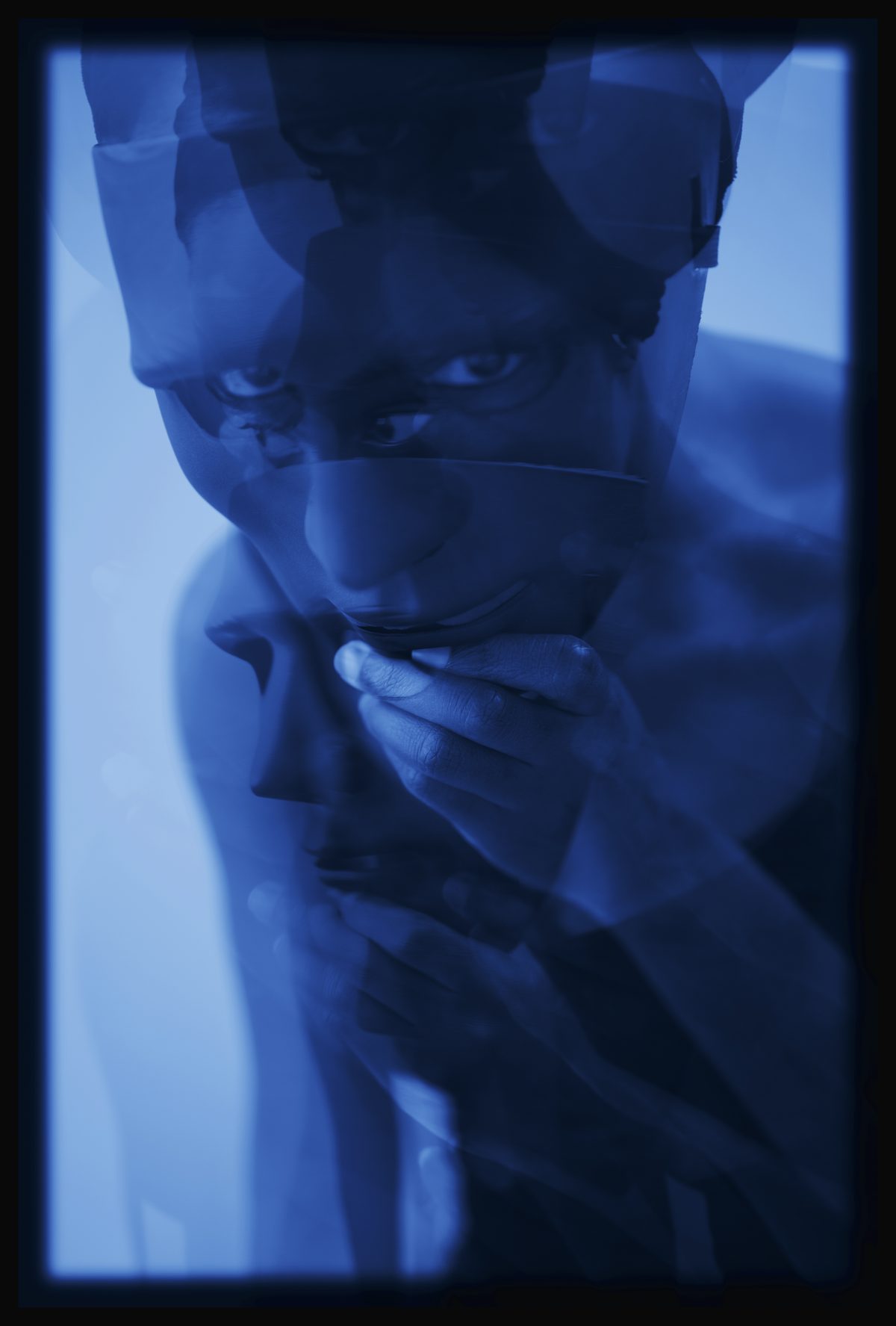A learning resource exploring representation of our inner self using characterisation and symbolism through the work of Heather Agyepong.
Part of Jerwood/Photoworks Awards 4
Introduction
Heather Agyepong’s new work, ego death, explores themes that extend from ideas around our alter or interior selves, and the many different ways these can be projected through our exterior appearances.
Themes
ego death is a project about self-discovery, imperfection, compassion, and radical acceptance inspired by psychiatrist Carl Jung’s concept of ‘The Shadow’. Exploring techniques including free writing/painting, and self-reflection, Agyepong has created a series of self-portraits using double exposure to create an arresting new visual language where her shadow characters are revealed.
The work begins with ideas around shadow theory (Carl Jung) and enters realms of popular culture through the artist’s references to images and ideas she has encountered across her life. Using double exposure, self-portraits are tinged with a prominent blue veneer. Agyepong creates her own visual vocabulary, opening up new narratives about how we view ourselves and how others view us, and by turning the camera on herself, opens our bodies and minds to a world seen through and beyond the lens.
I. Photographing the self
ego death is a series that, much like Agyepong’s extended body of work, intuitively reimagines the self-portrait. In a world where ‘selfies’ and images of one’s self can be viewed and engaged with often in an online space, it is important within photography to remember the core sensibilities of what it means to turn the camera on one’s self.
In the Oxford Dictionary, a self-portrait is defined as ‘a portrait that an artist produces of themselves.’ On the other hand, a selfie is ‘a photograph that one has taken of oneself, typically one taken with a smartphone or webcam and shared via social media.’
Within photography, the creation of our image of the ‘self’ has historically been used as a mechanism to explore and express our inner thoughts.

Make
We all change as time progresses, whether this is over years, months, or even weeks. Within this time, we experience physical or emotional change, and such changes can have a profound effect on our self-image. By comparing images taken over a specific period, we may be able to create and observe an interesting comparison between our interior and exterior self.
Ask students to take three self-portraits within the space of a week. These self-portraits do not necessarily need to be representational, but can also be shown visually through something abstract or symbolic (perhaps using props or objects). Encourage students to let their portraits carry an emotion, a message, a story, or be inspired by something.
The triptych* encourages students to play and experiment with different ways of storytelling, and reflect on how things may change within a certain space or time. These self-portraits should aim to carry a certain idea and meaning and must carry a message of what inspired the images.
*A triptych is an artwork consisting of three parts or panels.
Discuss
Having completed the self-portrait task, introduce and discuss ego death by Heather Agyepong. What do students think about Agyepong’s work?
Are these conventional styles of portrait? Do they look like other portraits you have seen before?
What defines a good self-image?
What defines a selfie? Is there a difference between a selfie and a self-portrait?
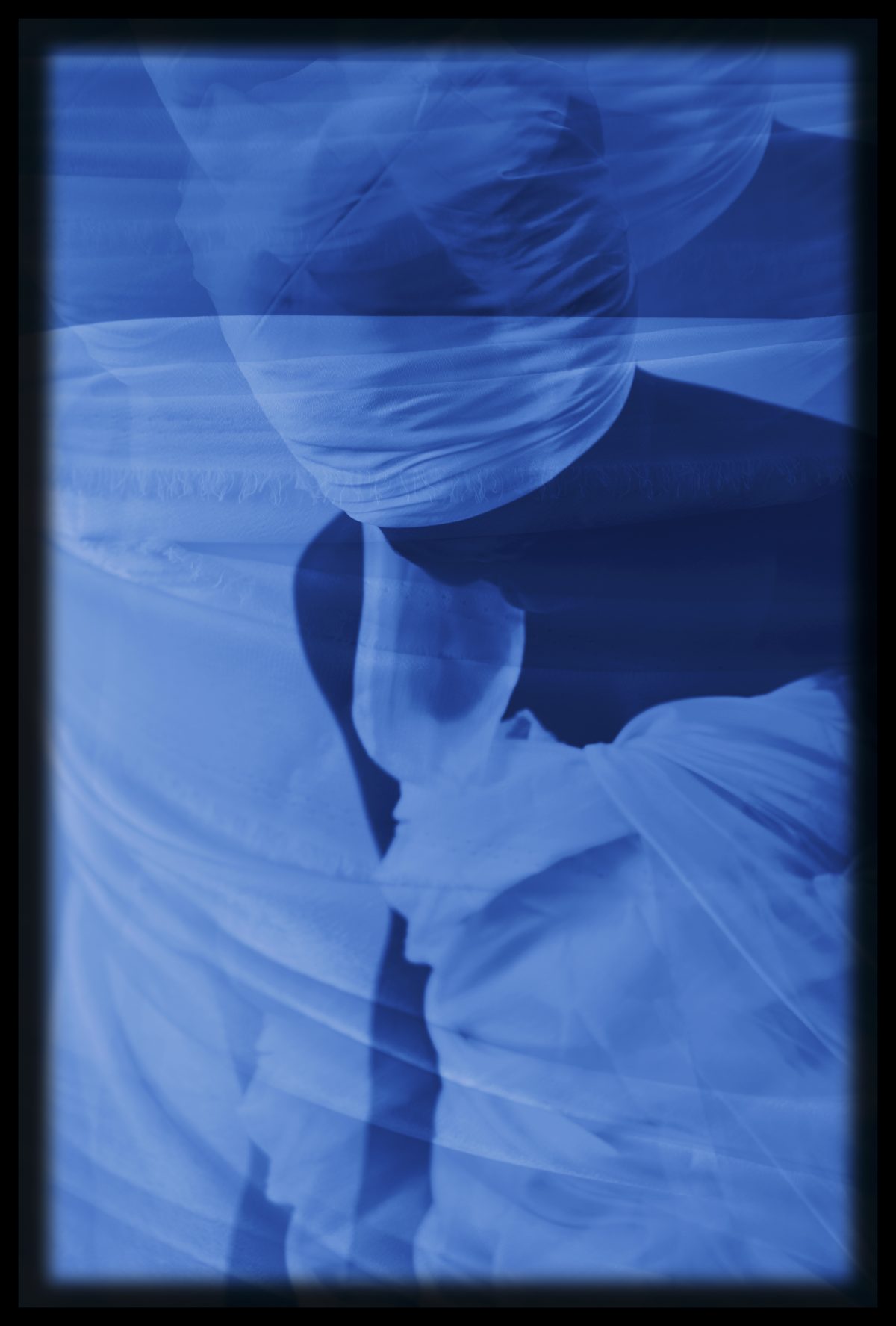
II. Taking on a character
Often with photography, whether we are our own subjects, or whether we work with others or models to create our image, posing for a photograph is a performative act.
In ego death, Agyepong is inspired by many pop culture references, such as characters from Jordan Peele’s film Get Out (horror, cert 15) children’s tales such as Pinnochio, and even the use of colour seen in Barry Jenkins’ film, Moonlight.
Agyepong expresses these references in a variety of subtle ways – through her movement and physical embodiment of the characters, her technique of developing images and casting them in a blue, or even through her titling of each image.
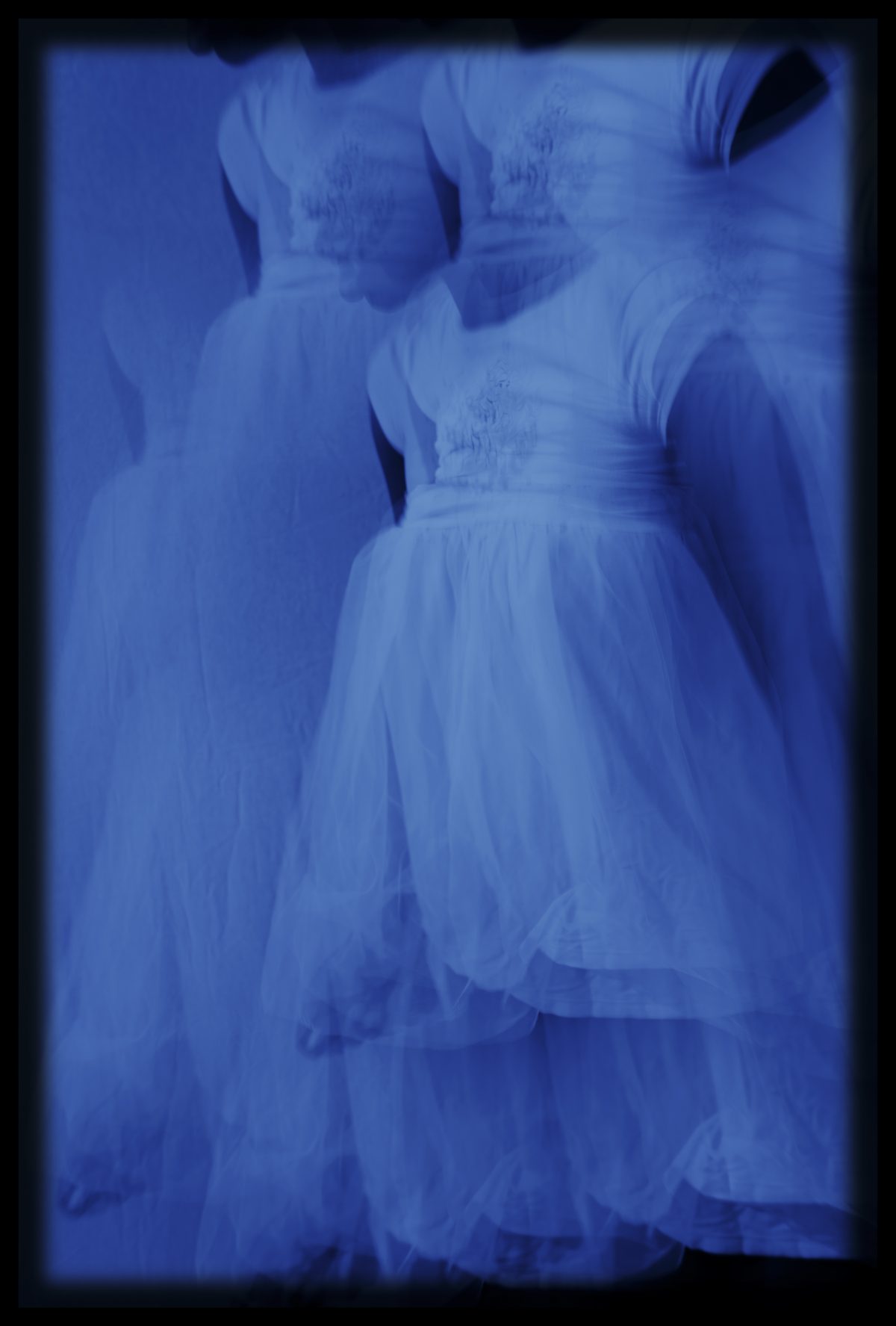
Research
Research some of the other cultural references Agyepong has used in her past work. Find out more here: Habitus: Potential Realities and Wish You Were Here. Together as a group, discuss your findings.
Discuss
Selecting an image each from ego death. Ask students to draw out a minimum of three responses to the work. These can be around the story of the work, how the work was made, or how the work is presented among others.
Think about what story you feel like images are telling.
How and why has Agyepong embodied various characters for ego death? What comes to mind when you look at it?
What do clothes tell us about a person?
How do gestures and mannerisms help transform into character?
What is the effect of dressing up when performing?
Create
Agyepong often uses characterisation as a tool for representation. The process of taking on a character is a trope often used in photography, particularly by women photographers such as Maud Sulter and Ana Mendieta.
Ask students to create and photograph a character of their own. Characters can be inspired by people they know, or characters they have encountered in visual culture such as television, films, advertising, or online. To tell this story, students should again create a triptych (a series of three images) that tell these characters’ stories.
Create an imaginary story for the characters – their lives, occupations, family, interests, etc. Think about why this is the story or character you have chosen to depict. What do they mean to you? Encourage students to think about how they would stage this image. What clothing, props, and background would they use to suggest something about their life? How can students experiment with style, technique and presentation?
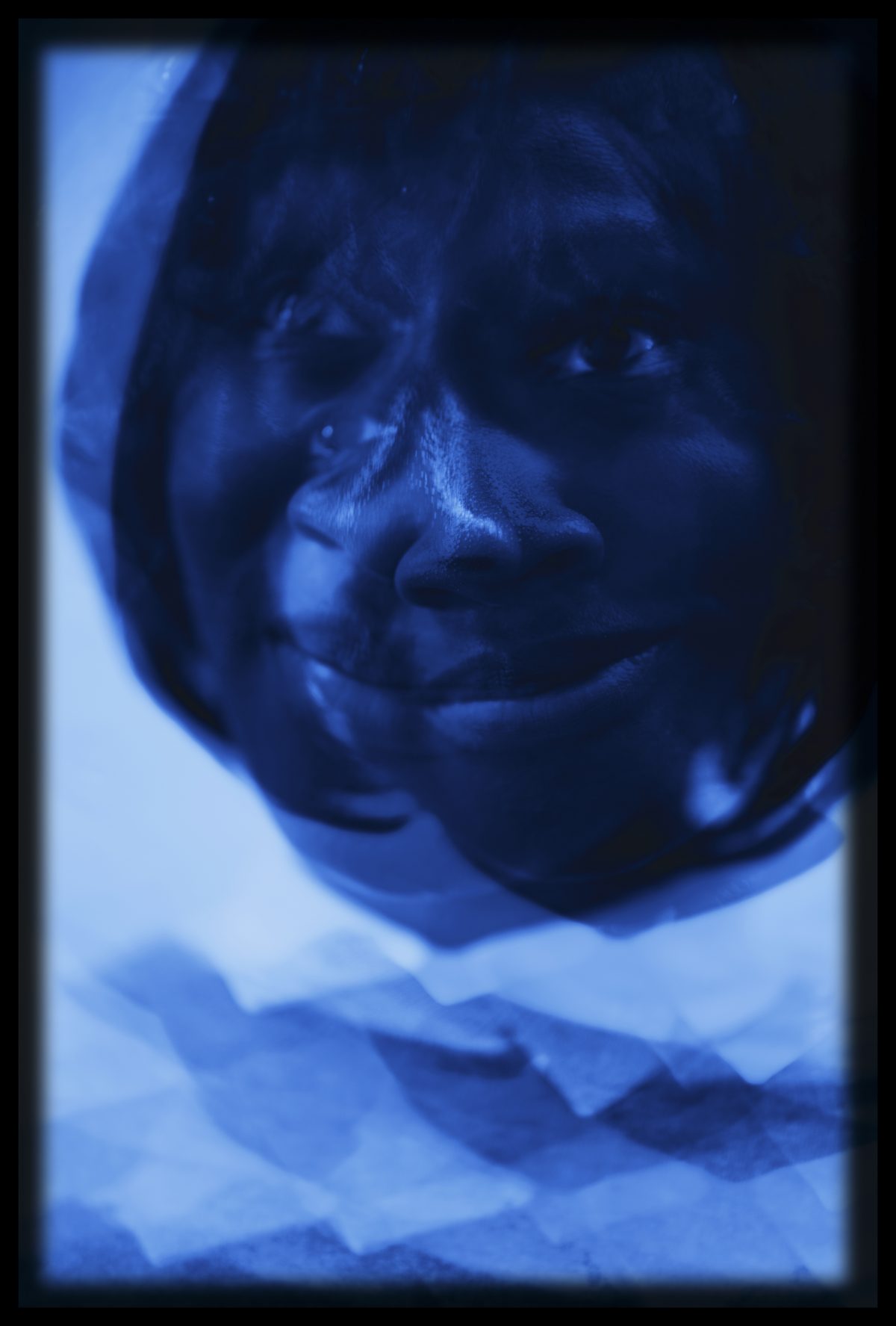
III. Visualising memories
A memory is something to be told in multiple parts and layers. Often, we call on our imagination to drive the psychological process of acquiring, retaining, and later retrieving information – a memory.
In ego death, Agyepong uses an array of visual devices to incite a double- effect of memory, both for herself and her audience. Using double exposure, silhouettes, shadows, and various hues of the colour blue, Agyepong truly took to task how we can use objects, shapes and bodies to reflect memories.
Investigate
What other visual tools* have photographers used to evoke memories? Are they similar to Agyepong’s or very different? Try exploring the work of some of these photographers for some ideas.
Maud Sulter
Joy Gregory
Jennie Baptiste
Nan Goldin
Silvia Rosi
*By ‘visual tools’ we mean creative strategies such as use of colour or black & white, text, framing, composition, materials, props – the list is endless!
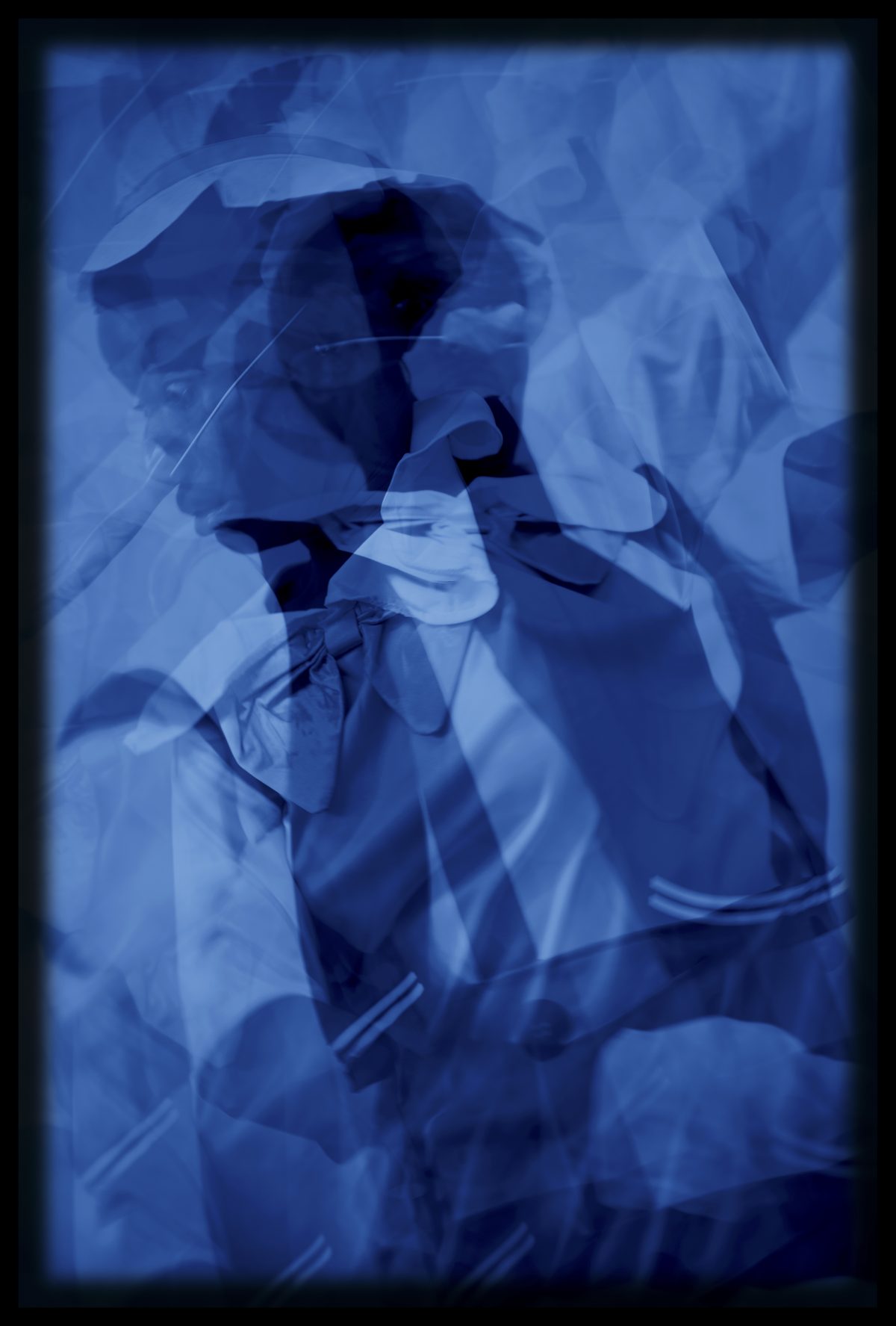
Make
Thinking of the different ways that Agyepong plays and experiments with her references, ask students to re-stage an image. This can mean re-staging an old family photograph, a scene from one of your favourite film, book, or music video. The image must come from a personal reference.
This task is aimed at asking the students to perform for the camera to evoke their own memory and interpretations. One image could have multiple variations if given to multiple students to recreate. This is about teasing out the performative aspect of photography and creating a scene.
Discuss
As part of the above activity, students accompany their image with text that can either be a fictional re-telling of their image or a literal step-by-step of how the image was created.
Discuss the following questions:
How can characterisation in photography be used to tell alternative histories and raise awareness of important issues?
What does it mean to stage an image?
How can memory be represented through photography?
Other Photographers
Maud Sulter
James Barnor
Bernice Mulenga
Ana Mendieta
Renee Cox
Graciela Iturbide
Suzy Lake
Anne Noggle
Rahim Fortune
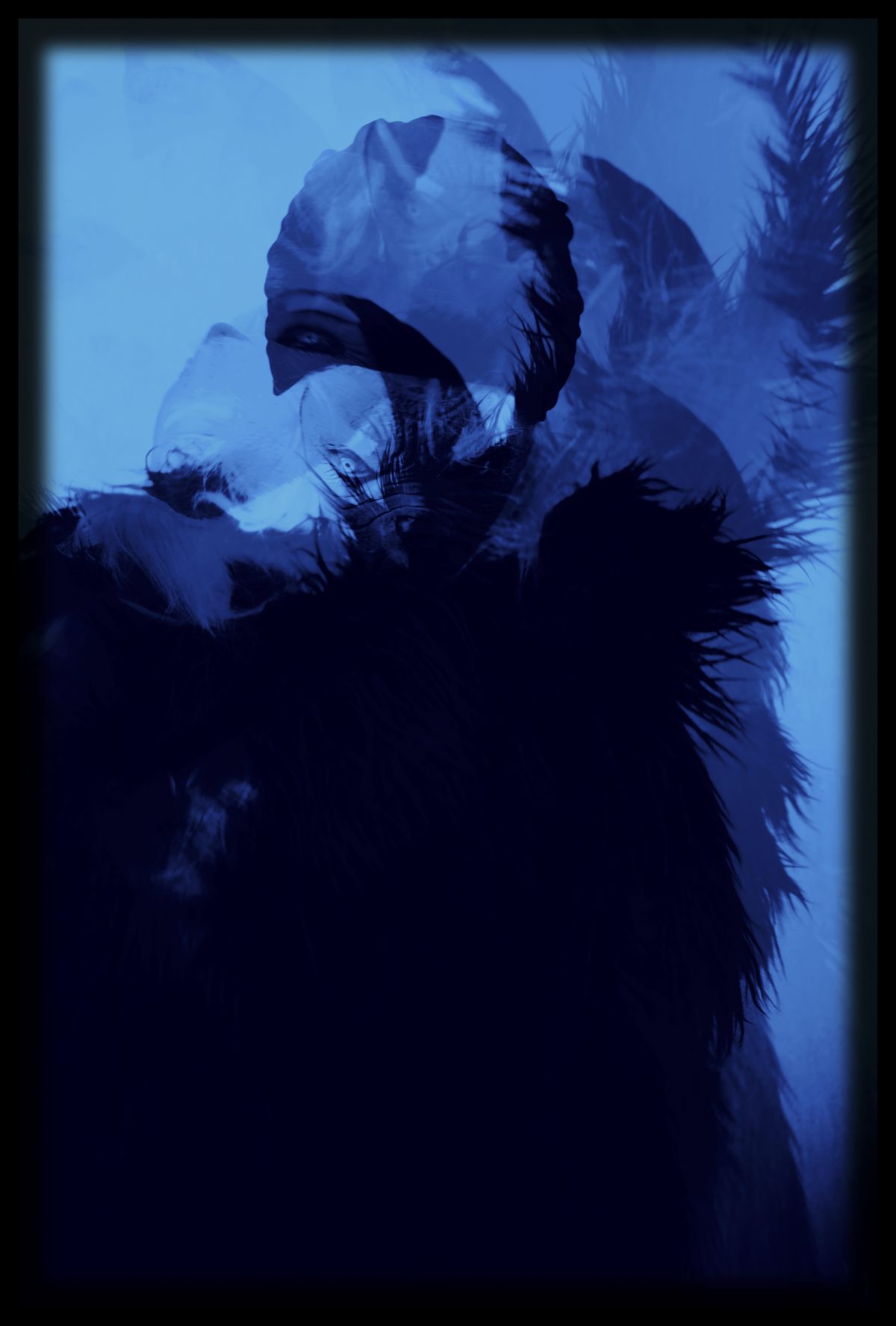
About the Contributor
Pelumi Odubanjo is a London- based multidisciplinary artist, writer and curator. Having recently completed her MA in Contemporary Art Theory at Goldsmiths University London, her work is informed by ongoing explorations in Black liberatory practice and methodologies. Her most recent projects include working with the Tate Exchange at Tate Modern, co-founding the art research collective Contakt Collective, and being a recipient of the Forshaw Fine Art Endowment in 2019.
Pelumi focusses her work on decolonial thought in practice and developing decolonial curatorial strategies, with her photography exploring constructions of black modernities through images of black subjecthood.
